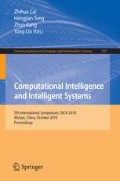Abstract
Influenza A (H1N1) has caused tremendous damage in the world, so to learn its law is of great significance in the epidemic prevention and social stability. Taking the multi-agent system (MAS), geo-spatial environment to build the simulation model, SIQR epidemic model is introduced to simulate the process of the spread of influenza A (H1N1), test the multiple sets of preventive and control measures proposed from the perspectives of administrators and the public and do comparisons with the testing results. The testing results indicate that: the control of short-term epidemic spread requires administrators to implement powerful effective measures in public places to isolate patients, while inhibition of spread and rebound of the epidemic in a long-term way hereof needs administrators and the public working together to strengthen the self-protection, and timely medical treatment; repeated trials of the disease shows that the occurrence of rebound in the vicinity of 100d; the number of the immune and the susceptible are negatively correlated.
Access this chapter
Tax calculation will be finalised at checkout
Purchases are for personal use only
Preview
Unable to display preview. Download preview PDF.
References
Kamel Boulos, M.N., Roudsari, A.V., Carson, E.R.: Health geomatics: An enabling suite of technologies in health and healthcare. J. Bio. Inf. 9, 195–219 (2001)
Bates, J.M., Granger, C.W.J.: Combination of forecasts. Opelations Research uarterly 4, 451–468 (1969)
Brody, H., Rip, M., Vinten-Johansen, P., et al.: Map-making and myth-making in Broad Street: the London cholera epidemic 1854. The Lancet 356, 64–68 (2000)
Sargent, D.J.: Comparison of Artificial Neural Networks with other statistical approaches. Cancer 8, 1636–1644 (2001)
Kao, J., Huang, S.: Forecasts using neural network versus Box-Jenkins’s methodology for ambient air quality monitoring data. Air Waste Manag Assnc. 2, 219–226 (2000)
Rodrigo, M.J., Morell, F., Helm, R.M., et al.: Identification and partial characterization of the soybean-dust allergens involved in the Barcelona asthma epidemic. J. Allergy Clin. Immunol. 4, 78–84 (1990)
Sanden, A., Jarvholm, B., Larsson, S., et al.: The risk of lung cancer and mesothelioma after cessation of asbestos exposure: a prospective cohort study of shipyard workers. Eur. Respir. 5, 281–285 (1992)
Dong-qing, Y.E.: Pandemic and response of influenza A (H1N1). Chinese Journal of Disease Control and Prevention 3, 216–218 (2009)
John Oommen, B., Calitoiu, D.: Modeling and simulating a disease outbreak by learning a contagion parameter-based model. In: Proceedings of the 2008 Spring simulation multiconference. Society for Computer Simulation International, Ottawa, Canada, pp. 14–17 (2008)
Macal, C.M., North, M.J.: Tutorial on agent-based modeling and simulation part 2: how to model with agents. In: Perrone, L.F., Lawson, B.G., Liu, J., Wieland, F.P. (eds.) Proceedings of the 37th Winter Simulation Conference, Monterey, CA (2006)
Bian, L.: A conceptual framework for an individual-based spatially explicit epidemiological model. Environment and Planning B: Planning and Design 31, 381–395 (2004)
Chebeane, H., Echalier, F.: Towards the use of a multi-agents event based design to improve reactivity of production system. Computers & Industrial Engineering 37, 9–13 (1999)
National Bureau of Statistics of China, http://som.xjtu.edu.cn/somlab/zhonguotong-jinianjian/2009/indexce.htm
Author information
Authors and Affiliations
Editor information
Editors and Affiliations
Rights and permissions
Copyright information
© 2010 Springer-Verlag Berlin Heidelberg
About this paper
Cite this paper
Xiao, H., Tian, H., Shao, L., Zhao, J., Xu, Jz. (2010). Spatio-temporal Simulation of Epidemiological SIQR Model Based on the Multi-Agent System with Focus on Influenza A (H1N1). In: Cai, Z., Tong, H., Kang, Z., Liu, Y. (eds) Computational Intelligence and Intelligent Systems. ISICA 2010. Communications in Computer and Information Science, vol 107. Springer, Berlin, Heidelberg. https://doi.org/10.1007/978-3-642-16388-3_20
Download citation
DOI: https://doi.org/10.1007/978-3-642-16388-3_20
Publisher Name: Springer, Berlin, Heidelberg
Print ISBN: 978-3-642-16387-6
Online ISBN: 978-3-642-16388-3
eBook Packages: Computer ScienceComputer Science (R0)

